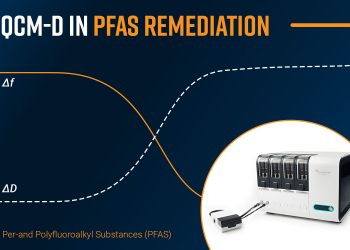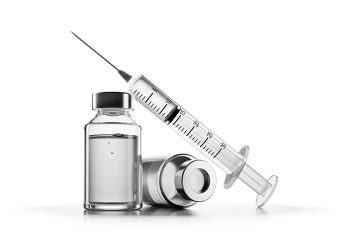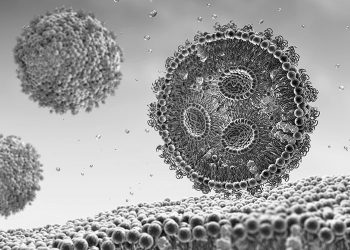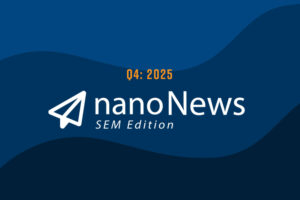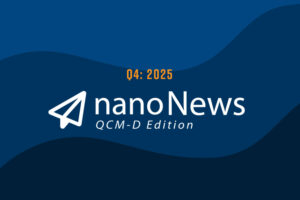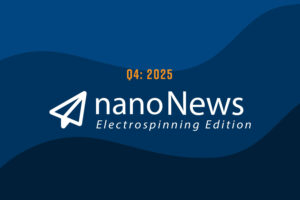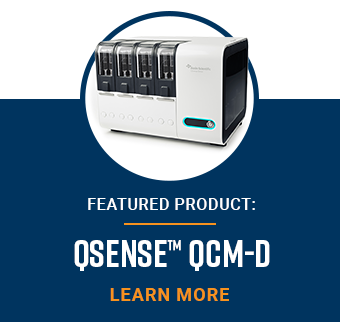
Welcome to the Quartz Crystal Microbalance with Dissipation monitoring (QCM-D) edition of the Nanoscience Instruments newsletter, nanoNews. We are excited to share the latest updates from around the QCM-D community with you!
In this Summer 2024 newsletter you will find recent webinars, application overviews, blogs, and publications that highlight several use cases of QSense QCM-D across a variety of industries and research applications.
If you are interested in more regular updates about QSense QCM-D news, we invite you to follow us on LinkedIn as well!

NEWS & UPDATES

New Resource: Solutions for Pharmaceuticals
Want to learn more about how QSense QCM-D has impacted pharmaceutical development? Visit our new Solutions page to discover 20+ published examples from leaders in the industry!
Upcoming Event: Biolin Scientific QSense User Days
We invite you to join the pioneers of QCM-D technology, Biolin Scientific, for a day filled with inspirational and educational online sessions on QSense QCM-D.
Become a part of the QSense community and share your research!
We invite you to share your work and learn from fellow scientists. Please submit your abstract for an oral presentation by August 31st.
The User Day is organized in two sessions:
Session 1:
Dedicated to scientific topics with key speakers from various research areas sharing their results and insights
Session 2:
Focused on Technology and Practical Usage, including a panel session with the QSense application team

APPLICATION UPDATES
Optimizing Chemical Mechanical Planarization (CMP) Processes with QCM-D

Developing the next generation of semiconductor packaging, and overcoming the challenges in this space, will require novel materials and manufacturing processes.
In our new Application Overview, we highlight how QCM-D has been used to simulate and analyze CMP processes to optimize slurry formulations and protocols. We also share a case study that demonstrates how QCM-D can be used to study slurry additive and abrasive interaction with surface materials relevant to the electronics industry.
How Does QCM-D Enable Research in PFAS Remediation?
Per- and PolyFluoroAlkyl Substances (PFAS) have been widely used in a range of applications. The concern with PFAS arises from their persistence in the environment and potential adverse health effects. …

WEBINARS
Pharmaceutical Applications of QCM-D
Join us to learn how to leverage the sensitivity of QSense QCM-D to gain insight into biopharmaceutical–material interactions!
Assessing Stability and Material Compatibility of Biopharmaceutical Formulations through QCM-D Analysis
Get an early indication of potential incompatibilities and identify ways to mitigate. In this webinar you will learn about QSense QCM-D technology and how it can be used to analyze …
In this recent webinar, we discussed a unique approach to screening Lipid Nanoparticle (LNP) formulations, which enables scientists to identify the most promising candidates for in vitro and in vivo studies before the resource-intensive testing begins.
Screening of the Binding Affinity of Serum Proteins to mRNA-LNPs by QCM-D
Join us to hear from Federica Sebastini, who earned her PhD in chemistry from the University of Reading, UK, in 2014. She is currently working as a Tenure Track Assistant …
CONFERENCE CORNER
ACS Fall 2024 | August 18-22 | Denver, CO

Visit us in Booth #1719 at the ACS Fall Meeting to discover the new gold standard in surface analysis instrumentation–the QSense Omni QCM-D–and chat with our experts about its transformative power for quantifying nanoscale interactions.

SERVICE & SUPPORT
Would your team benefit from hands-on QCM-D training?
Whether you have new users in your lab, your QSense instrument has moved facilities, or you are reviving efforts to utilize the QCM-D equipment in your lab, we invite you to join us for a comprehensive, 2-day training with our QCM-D experts!
Mark Your Calendar:
September 10-11, 2024
Location:
Nanoscience Instruments – Virginia Office/Lab
5845 Richmond Highway Ste. 125, Alexandria, VA 22303
Registration will be limited due to instrument availability and lab space, so we suggest you reserve your spot early!
For training costs, lodging information, and details about the agenda, click the button below to contact our QSense Product Manager, Dr. Archana Jaiswal.

RECENT QSENSE PUBLICATIONS
Discover recently published journal articles from our QSense Customers!
- Investigation of Rare Earth Element Binding to a Surface-Bound Affinity Peptide Derived from EF-Hand Loop I of Lanmodulin: https://doi.org/10.1021/acsami.3c17565
- Deciphering Mechanochemical Influences of Emergent Actomyosin Crosstalk using QCM-D : https://doi.org/10.1101/2024.02.26.582155
- Monitoring Interactive Adsorption of the Milk Fat Globule Membrane and β-Lactoglobulin Using a Quartz Crystal Microbalance with Dissipation: https://doi.org/10.1021/acsfoodscitech.3c00607
- Comparison of the adsorption of linear and cyclic antimicrobial peptides onto cellulosic compounds-reinforced poly(vinyl alcohol) films using QCM-D: https://doi.org/10.1016/j.colsurfa.2024.133490
- Influence of titanium nanoscale surface roughness on fibrinogen and albumin protein adsorption kinetics and platelet responses: https://doi.org/10.1002/jbm.a.37635
- Controlling spatial distribution of functional lipids in a supported lipid bilayer prepared from vesicles: https://doi.org/10.1016/j.jcis.2024.03.055
- Human mesenchymal stromal cell adhesion and expansion on fluoropolymer surfaces modified with oxygen and nitrogen-rich plasma polymers: https://doi.org/10.1016/j.colsurfb.2023.113740
- Non-eluting, surface-bound enzymes disrupt surface attachment of bacteria by continuous biofilm polysaccharide degradation: https://doi.org/10.1016/j.biomaterials.2018.03.016
If you are a QSense user and would like your paper to be featured in a future newsletter, please send us a link to the publication via email: marketing@nanoscience.com.



